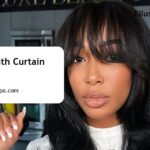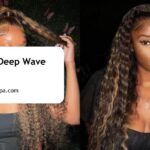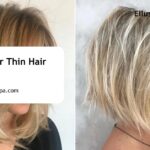Looking for a hairstyle that balances classic edge with modern sophistication? The faded mullet might be exactly what you’ve been searching for. This contemporary twist on the iconic 80s cut has made a remarkable comeback, earning praise from fashion-forward individuals and celebrities alike.
We’ve seen the faded mullet transform from a ridiculed relic to a sought-after style in recent years. Unlike its predecessor, today’s version features clean, graduated fades on the sides that blend seamlessly into longer locks at the back. It’s versatile enough to customize based on your personal style while maintaining that distinctive “business in front, party in back” essence that made the original so memorable.
The Evolution of the Faded Mullet: From Retro to Modern Trend
The faded mullet has undergone a remarkable transformation since its inception in the 1970s. Initially popularized by rock musicians and athletes, this distinctive hairstyle became a cultural phenomenon during the 1980s when icons like David Bowie and Billy Ray Cyrus sported the look. Throughout the 1990s, the mullet gradually fell out of fashion, becoming the subject of ridicule and associated with outdated style choices.
Fashion’s cyclical nature breathed new life into the mullet around 2018 when forward-thinking stylists began reinventing the classic cut. Modern interpretations incorporated precision fades on the sides, creating a more sophisticated silhouette than its predecessors. Celebrity adoption played a crucial role in legitimizing the trend, with stars like Miley Cyrus, Zendaya, and various K-pop idols showcasing refined versions that appealed to younger audiences.
Today’s faded mullet bears little resemblance to its 80s ancestor, featuring technical elements borrowed from contemporary barbering. The current iteration boasts skin fades transitioning seamlessly into textured tops, often complemented by creative color work that wasn’t possible decades ago. Social media platforms like TikTok and Instagram have accelerated the trend’s popularity, with hashtags like #mulletseason and #fadedemullet generating millions of views worldwide.
What makes the modern faded mullet particularly interesting is its gender-neutral appeal and adaptability. Unlike the original version, which was predominantly worn by men, the contemporary style has been embraced across gender identities as a statement of individuality. Professional stylists now offer countless variations, from subtle business-appropriate versions to bold, avant-garde interpretations featuring dramatic length disparities and vibrant color treatments.
10 Best Faded Mullet Styles to Transform Your Look

Classic Faded Mullet With Clean Edges
The classic faded mullet offers a timeless take on this revived trend with its perfectly balanced proportions. This style features a gradual fade that smoothly transitions from the longer hair on top to shorter sides, creating a clean and defined silhouette. Your barber will maintain enough length on the sides to avoid a shaved appearance while ensuring they’re significantly shorter than the top section. The clean edges give this mullet variation a polished look that works well in both casual and professional settings, making it an excellent entry point for mullet newcomers.
Textured Faded Mullet With Layered Top
Adding texture transforms a standard mullet into a ever-changing style statement that’s full of visual interest. This variation incorporates deliberate layers throughout the top portion, creating movement and dimension that contrasts beautifully with the sleek faded sides. Your stylist will cut varying lengths to add volume and texture, giving the hair a more lived-in, effortless appearance. The textured top provides versatility in styling—wear it tousled with some texturizing spray for a casual look or more defined with pomade for special occasions.
Curly Faded Mullet for Natural Volume
Curly hair types can embrace the faded mullet trend with a style that celebrates natural texture and volume. This variation leaves the curly top and back sections longer to showcase your natural curl pattern while fading the sides for a balanced, contemporary look. The contrast between the tight fade and voluminous curls creates a striking visual effect that turns heads. Maintaining moisture is key with this style, so we recommend using curl-improving products to keep your natural texture defined and frizz-free.
Undercut Faded Mullet for Maximum Contrast
For those seeking a bold statement, the undercut faded mullet delivers dramatic contrast that commands attention. This style features sides and back that are cut extremely short—often nearly shaved—creating a stark distinction between the longer top section and the ultra-short sides. The dramatic transition emphasizes the mullet’s signature shape and adds an edgy, contemporary element to the classic silhouette. This high-impact variation works particularly well for those with thick hair who want to reduce bulk while maintaining the mullet’s distinctive profile.
Modern Faded Mullet With Tapered Sides
The modern tapered approach offers a subtler interpretation of the mullet that’s perfect for professional environments. Instead of sharp fades, this style utilizes a gentle taper on the sides, creating a smoother transition from the longer top to the shorter sides. The softer graduation maintains the mullet’s essence while presenting a more refined and versatile appearance. This contemporary take preserves length through the back while keeping the sides neat and manageable, making it an excellent choice for mullet enthusiasts who need a more understated look for daily wear.
Burst Fade Mullet
The burst fade mullet creates dramatic visual impact with its distinctive fade pattern that radiates outward from behind the ear. This style features a rapid transition from long to short hair, resulting in sharp edges and clearly defined lines that frame the face. Athletes and trendsetters have embraced this bold variation for its eye-catching appearance and structural precision. The burst fade technique adds architectural interest to the traditional mullet silhouette, making it perfect for those who want their hairstyle to serve as a form of self-expression.
Faded Mullet with Fringe
Incorporating a fringe elevates the faded mullet with additional dimension and face-framing elements. This style pairs a side-swept fringe with a clean fade, creating a harmonious flow between the longer front and back sections. The fringe can be customized to complement your face shape—shorter for round faces or longer for angular features. This variation works exceptionally well with fine, straight hair types, allowing the fringe to fall naturally while maintaining the mullet’s signature structure.
Fluffy Mullet with High Razor Fade
The fluffy mullet combines volume on top with a precise high razor fade for a textural masterpiece. This style relies on thick, coarse hair to achieve its characteristic choppy, spiky appearance with maximum height in the center. The hair gradually shortens toward the sides and back, creating a mohawk-inspired silhouette with mullet sensibilities. Styling products with strong hold are essential for maintaining the deliberate fluffiness that makes this variation stand out from more traditional mullet styles.
Platinum Faded Mullet
Color transforms the faded mullet into a true statement piece with platinum blonde creating striking contrast. This bleached variation pairs perfectly with a tight fade, as the dramatic color highlights the precision of the cut and emphasizes the transition between lengths. The platinum shade works particularly well to showcase texture in the longer sections while the fade maintains a clean, sharp appearance. This bold color choice requires regular maintenance and quality hair care products to preserve both the platinum tone and the health of your hair.
Curtained Faded Mullet
The curtained faded mullet blends 90s nostalgia with contemporary fade techniques for a hybrid style that’s gaining popularity. This variation features a middle part in the longer front section, creating curtain-like framing around the face while maintaining the characteristic mullet length in the back. The sides receive a modern fade treatment that keeps the style fresh and current. This versatile option offers the best of both worlds—the face-flattering effect of curtained bangs with the edgy appeal of a well-executed mullet and fade combination.
How to Ask Your Barber for the Perfect Faded Mullet

Getting the perfect faded mullet requires clear communication with your barber. We’ve compiled essential tips to help you articulate exactly what you’re looking for and ensure you walk out with the stylish modern mullet you desire.
Explain Your Vision Clearly
Describing your ideal faded mullet precisely helps your barber understand your expectations. Start by explaining that you want longer hair on top and in the back while keeping the sides short with a fade. Specify the type of fade you prefer, whether it’s a high and tight fade, burst fade, or a standard fade that transitions smoothly between sections. Emphasize that the back should be noticeably longer than the sides—this defining characteristic separates a true mullet from other cuts. Discuss how you want the top and front styled, mentioning if you desire exact texturing or layering for added dimension.
Key Terminology to Use With Your Stylist
Using professional barbering language increases your chances of getting exactly what you want. The term “fade” refers to the gradual decrease in hair length from top to sides. “High and tight fade” indicates a fade that begins higher on the head for a more dramatic effect. “Burst fade” describes a circular fade pattern that starts at the temples and curves around the head. Request proper “blending” to ensure a seamless transition between different lengths. “Layering” adds texture and movement, especially important for the longer sections. “Taper” means gradually decreasing the hair length as it moves up the head, creating a clean silhouette.
Reference Photos That Work Best
Visual examples significantly improve communication with your barber about your desired faded mullet. Choose photos showing multiple angles—front, sides, and back—so your stylist understands the complete look. Select images featuring models with hair types similar to yours for realistic expectations about how the style will translate to your exact texture. Point out particular details in the photos that appeal to you, such as the precise fade height, the texture on top, or the length at the back. Multiple reference images work better than a single photo, as they help communicate different aspects of the style you’re seeking.
Styling Products That Enhance Your Faded Mullet

Achieving the perfect faded mullet isn’t just about getting the right cut—it’s also about using the right products to maintain and enhance your style. We’ve compiled the essential styling aids that can take your mullet from good to great.
Texturizing Sprays and Sea Salt Answers
Texturizing sprays serve as your go-to solution for adding volume and that essential rock ‘n’ roll vibe to the longer back portion of your mullet. Apply these products after blow-drying, then scrunch your hair with your fingers to create that perfectly tousled effect. Brands like Texture Dust and Bumble and Bumble Surf Spray deliver excellent results for adding definition without weighing down your style.
Sea salt sprays create that coveted beachy texture and natural volume that complements the casual essence of a faded mullet. For best results, apply these sprays to damp hair before blow-drying to establish a solid foundation for your style. Uplift Provisions Company’s Sea Salt Spray stands out as a particularly effective option for mullet wearers seeking that effortless, textured look.
Pomades and Waxes for Definition
Pomades provide the medium to strong hold needed for controlling the front section of your faded mullet with a glossy, polished finish. Work a small amount between your fingertips and apply it through the front section, slicking it back or to the sides for a clean, sophisticated appearance. Popular choices include Signature Pomade and Baxter of California Clay Pomade, both offering excellent control without stiffness.
Waxes offer similar benefits to pomades but typically with a more matte finish, making them perfect for maintaining structure in your faded mullet. These products excel at molding hair into your desired shape while providing lasting hold throughout the day. For those with curly mullets, supplementing with moisturizing creams and curl enhancers helps keep those curls defined and frizz-free, while a wide-tooth comb prevents breaking up natural curl patterns.
For taper fade mullets specifically, lightweight styling mousse adds valuable volume without the heaviness of other products. Pair this with a vent brush during styling to achieve maximum lift and definition where you need it most.
Maintaining Your Faded Mullet: Care and Upkeep Tips

Keeping your faded mullet looking sharp requires consistent maintenance and the right techniques. Let’s jump into the essential care routines that will help preserve your stylish cut.
Recommended Trimming Schedule
Regular trims serve as the foundation for maintaining a well-defined faded mullet. Schedule appointments every one to two weeks to preserve the crisp lines of your fade, especially if you’re sporting a super low fade on the sides. Weekly maintenance ensures the tapered sides remain clean and the top stays properly trimmed. Your mullet’s overall shape depends on consistent upkeep, as even minimal growth can cause the fade to lose its definition. Bi-weekly visits to your barber will maintain the striking contrast between the shorter sides and the longer back section that makes the faded mullet so distinctive.
Daily Styling Routine for Faded Mullets
Your daily styling approach significantly impacts how your faded mullet looks throughout the week. Contrary to common belief, washing your hair daily can strip away natural oils that give mullets their best appearance. Second or third-day hair typically provides optimal texture and manageability for this style. Apply dry shampoo between washes to absorb excess oil without compromising your mullet’s natural body.
Brushing techniques matter when styling your faded mullet. Comb or brush the sides either forward or backward depending on your hair’s natural growth pattern, with most men preferring to brush their strands toward the back. Product selection plays a crucial role in maintaining your style throughout the day. Apply pomade or gel, such as Dove Men+Care Defining Pomade, to add shine and keep the sides perfectly in place.
Scalp health contributes to the overall appearance of your faded mullet. Massage oil into your scalp regularly to promote healthy hair growth and prevent dryness. Curly or wavy mullets benefit from specialized stylers that enhance natural texture while keeping the distinctive cut well-defined. Shea butter works exceptionally well for addressing exact texture needs and maintaining moisture balance.
Fade maintenance requires special attention to preserve the graduated effect. Get the sides tapered regularly to maintain the clean contrast that defines a faded mullet. Consider transitioning to a drop fade on your next haircut if you currently have a skin fade, as this brings the fade lower in the back for a more dramatic mullet silhouette. Trim the top consistently while allowing the back to grow to your desired length, typically just below the crown for that classic mullet appearance.
Celebrity Inspiration: Famous Faces Sporting the Faded Mullet

The faded mullet has gained impressive traction in recent years, with many celebrities embracing this modernized classic. These stars have helped transform what was once considered a questionable style choice into a legitimate fashion statement. Let’s explore some of the most influential celebrities who’ve made the faded mullet their signature look.
1. David Beckham
David Beckham consistently proves his status as a hair icon with his bold style choices, including various iterations of the faded mullet. His approach typically blends traditional mullet elements with contemporary fade techniques, creating a sophisticated yet edgy appearance. Beckham’s ability to combine classic and modern aesthetics has positioned him as a true trendsetter in the men’s grooming industry.
2. Brad Pitt
Brad Pitt has expertly embraced the faded mullet, showcasing its versatility throughout his career. Recent public appearances have featured his interpretation of this style with clean, precise fades that transition smoothly into longer sections. His version demonstrates how the faded mullet can be adapted for a more mature and refined aesthetic while maintaining its distinctive character.
3. Chris Hemsworth
Chris Hemsworth’s Australian roots perfectly complement his take on the faded mullet. The Thor actor frequently sports a variation featuring sharp, clean fades on the sides with expertly styled length at the back. His approach to the hairstyle perfectly balances rugged masculinity with contemporary grooming techniques, making it accessible to mainstream audiences.
4. Jason Momoa
Jason Momoa brings his signature rugged charm to the faded mullet, often incorporating skin fade or burst fade elements. His interpretation typically features dramatic contrast between the closely cropped sides and the voluminous back section. Momoa’s version illustrates how the faded mullet can project confidence and bold individuality while maintaining a structured appearance.
5. Harry Styles
Harry Styles continually pushes fashion boundaries with his hairstyle choices, including his take on the faded mullet. The singer and actor merges retro and modern sensibilities with his version, often incorporating textured tops with cleanly faded sides. Styles demonstrates how this versatile cut can complement avant-garde fashion choices and express personal style authenticity.
These celebrities showcase the remarkable versatility of the faded mullet across different face shapes, personal styles, and contexts. Their interpretations have helped elevate this once-maligned haircut into a legitimate style option for fashion-forward individuals. Each celebrity brings unique elements to their version, proving that the faded mullet can be customized to enhance individual features while maintaining its distinctive silhouette.
Who Can Rock a Faded Mullet: Face Shape Considerations

The faded mullet isn’t just a trending hairstyle—it’s a versatile cut that can be customized to flatter different face shapes. Finding the right variation of this modern classic depends largely on your facial structure, as certain adaptations can enhance your natural features while others might work against them. Let’s explore which face shapes work best with the faded mullet and how to adapt this style to complement your unique features.
Oval Face Shape
Oval faces hit the genetic jackpot when it comes to the faded mullet. This balanced face shape can accommodate nearly all variations of the mullet style thanks to its proportional dimensions. The natural symmetry of oval faces provides an ideal canvas for experimenting with volume and layers without disrupting overall harmony. We recommend playing with different lengths on top and varying fade heights, as oval-faced individuals can confidently explore more dramatic interpretations of the faded mullet.
Round Face Shape
Round faces benefit tremendously from the strategic structure a faded mullet provides. Adding substantial volume on top creates vertical length, effectively slimming and elongating the face. The tight fade on the sides further enhances this slimming effect while the length in back adds an interesting dimensional element. For optimal results, we suggest incorporating a higher fade with textured layers on top to create height and visual interest that complements rounder facial features.
Square Face Shape
Square-faced individuals can leverage the faded mullet to both highlight and soften their strong jawlines. The sharp lines of a well-executed fade complement the angular features characteristic of square faces, creating an intentionally edgy aesthetic. Softer layers through the top and back section can help balance the overall look while maintaining the distinctive structure. Square-faced clients often look striking with a mid to high fade that emphasizes their naturally defined facial architecture.
Heart Face Shape
Heart-shaped faces work surprisingly well with faded mullets when styled appropriately. The key lies in creating balance between the broader forehead and narrower chin. Softer layers around the jawline help add visual width to the lower portion of the face, while a carefully structured top prevents adding unnecessary volume to the already wider upper face. We’ve found that a low fade with textured fullness in the back creates an ideal equilibrium for heart-shaped faces.
Diamond Face Shape
Diamond face shapes feature narrow foreheads and jawlines with prominent cheekbones, creating a perfect opportunity for a customized faded mullet. Adding width at both the top and bottom through strategic layering helps balance the wider middle section of the face. The fade element should be positioned to complement rather than compete with the natural angles of a diamond face. Additional texture and volume at the crown can create the illusion of width where needed most.
Styling Considerations
Beyond face shape, hair texture significantly influences how a faded mullet will look. Fine, straight hair particularly benefits from a fade with fringe, as this combination keeps hair close to the head while adding dimension and movement. Coarser or curlier textures might require different approaches to achieve the desired silhouette. We always recommend discussing texture-exact styling products with your barber to enhance your particular hair type.
Strategic layering and texturizing techniques further customize the faded mullet to your exact features. For instance, incorporating a high razor fade creates the illusion of additional height—particularly beneficial for round or oval faces seeking more vertical dimension. The skillful combination of these elements ensures your faded mullet doesn’t just follow a trend but truly complements your unique facial structure.
The Cultural Comeback: Why the Faded Mullet Is Trending Again

The faded mullet has made a remarkable return to the fashion spotlight in 2025, transforming from a ridiculed relic to a celebrated style statement. This resurgence reflects a broader cultural trend of revisiting and modernizing classic hairstyles with contemporary elements. Fashion cycles naturally bring back styles from previous decades, but the mullet’s comeback has been particularly strong due to its versatility and boldness.
Social media platforms have significantly amplified the faded mullet’s popularity, with style-focused hashtags generating millions of views across platforms. Celebrity endorsements have legitimized this once-controversial cut, making it accessible to mainstream audiences who might have previously dismissed it. The nostalgic appeal connects with those who remember the original trend while attracting younger generations discovering it for the first time.
The modern faded mullet serves as a form of self-expression rather than just a hairstyle. Many adopt this bold look as a statement against conventional beauty standards and rigid gender norms in appearance. Its adaptability allows for personalization while maintaining the iconic “business in front, party in back” essence that defined the original style.
Festival culture and alternative fashion scenes have embraced the faded mullet as their signature look. The style perfectly balances polished elements with rebellious energy, making it ideal for occasions where standing out is celebrated. Fashion influencers continually showcase creative interpretations of the faded mullet, introducing variations that keep the trend fresh and evolving.
Cultural nostalgia for the 1980s extends beyond hairstyles to music, film, and fashion, creating a perfect environment for the mullet’s resurgence. The style has transcended its historical stereotypes to become a sophisticated choice for those seeking distinctive personal style. Its continued popularity demonstrates how fashion trends often return in reimagined forms that respect their origins while embracing modern sensibilities.
Conclusion: Embracing the Faded Mullet With Confidence
The faded mullet has transcended its status as a nostalgic throwback to become a legitimate style statement for 2025. This versatile cut bridges generations while offering endless customization possibilities for all face shapes and hair textures.
We’ve watched this once-ridiculed hairstyle transform into a symbol of bold self-expression that challenges conventional beauty standards. With celebrity endorsements and social media fueling its popularity the faded mullet now represents both retro appeal and modern sensibilities.
Whether you opt for a subtle interpretation or go for a dramatic statement this iconic “business in front party in back” style has proven its staying power. With the right maintenance routine and styling products you’ll rock this distinctive look with confidence and flair.
Frequently Asked Questions
What exactly is a faded mullet?
A faded mullet is a modern interpretation of the classic 80s mullet that features clean, graduated fades on the sides transitioning into longer hair at the back. It maintains the iconic “business in front, party in back” aesthetic while incorporating contemporary barbering techniques like skin fades and textured tops. This updated version balances nostalgic appeal with current styling trends.
When did the mullet hairstyle first become popular?
The mullet first gained popularity in the 1970s, primarily among rock musicians and athletes. It reached its peak in the 1980s with icons like David Bowie and Billy Ray Cyrus sporting the distinctive cut. After falling out of favor in the 1990s, the style began its comeback around 2018, with a full resurgence apparent by 2025.
Which celebrities are wearing faded mullets today?
Several high-profile celebrities have embraced the faded mullet, helping legitimize it as a fashion statement. Notable figures include Miley Cyrus, Zendaya, David Beckham, Brad Pitt, Chris Hemsworth, Jason Momoa, and Harry Styles. Their diverse interpretations of the style demonstrate its versatility and appeal across different personal aesthetics.
Does the faded mullet work for all face shapes?
Yes, the faded mullet can be customized to flatter different face shapes. For oval faces, most variations work well. Round faces benefit from added volume on top and a longer back. Square faces look good with softer edges and texture. Heart-shaped faces work with fuller sides, while diamond-shaped faces shine with balanced proportions and texture throughout.
How do I ask my barber for a faded mullet?
To get the perfect faded mullet, bring reference photos showing the exact style you want. Clearly communicate your desired length on top, sides, and back. Specify the type of fade (skin, taper, drop) and discuss how dramatic you want the transition to be. Consider your hair texture and face shape during the consultation for best results.
How often should I trim my faded mullet?
Maintain your faded mullet with regular trims every 2-3 weeks to keep the fade looking sharp and prevent the style from losing its shape. The longer top and back portions can go 4-6 weeks between cuts. For a well-maintained look, schedule more frequent touch-ups for the faded portions while allowing the signature longer sections to grow.
What products work best for styling a faded mullet?
The best products for styling a faded mullet depend on your specific variation and hair texture. Generally, texturizing sprays add volume and separation, pomades provide hold with shine, and lightweight styling creams work well for definition. For curly mullets, use curl enhancers, while straight hair benefits from texturizing powders to create fullness.
Is the faded mullet gender-specific?
No, the modern faded mullet has a gender-neutral appeal and is embraced by individuals across all gender identities. Its versatility allows for personalization that suits anyone’s style preferences, from subtle interpretations to bold statement cuts. This inclusive aspect has contributed significantly to its popularity in contemporary fashion and grooming circles.
What are the most popular types of faded mullets?
The most popular faded mullet variations include the classic faded mullet, textured mullet, curly faded mullet, undercut faded mullet, modern tapered mullet, and burst fade mullet. Each style offers unique characteristics that can be customized according to personal preference, hair texture, and face shape for an individualized look.
How did social media influence the mullet’s comeback?
Social media platforms have significantly amplified the faded mullet’s resurgence through style-focused hashtags like #mulletseason that generate millions of views. Instagram, TikTok, and Pinterest provide endless inspiration through celebrity looks and everyday transformations. These platforms have democratized the trend, connecting professional stylists with audiences seeking to embrace this nostalgic yet modern hairstyle.







